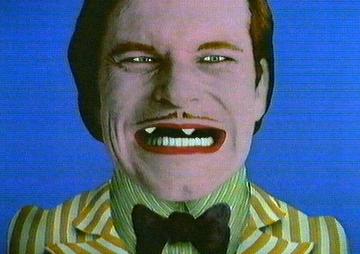Post by mxmlln on Oct 22, 2005 23:20:00 GMT -5
Martini “Shop Girl”; The Movie Reviewed
The preview bought me. With its summarily attractive kinetics of romance and difficulties, I sought the identical, unabridged counterpart. Instead, the film stopped moving and was replaced by a vacuum with no visible direction or conclusion. Despite the hollow and always difficult middle, the film completed well, as it had begun.
I have something good to say to justify my latter criticisms. “Shop Girl” was likely the most uncompromising and consistent film in terms of aesthetics. Every scene and its shots were thoughtfully composed to produce as much beauty as it could. Usually a film will attempt such, but after the content develops the relevance of the shots will outweigh the integrity of the composition. However, “Shop Girl” kept its pride and even to the detriment of the lens focus, the film pursued its aim of absolute perfection.
“Shop Girl” stars a lonely, Saks Fifth Avenue counter-girl named Mirabelle. Her situation is changed when two men approach her, separately. The dating scenes are pathetic and awkward which reveal the reality for most. Considering the slow pace, due mostly to the desired tone and elaborate composing of irrelevant, drawn-thin beauty shots, we wait for a direction to appear. The movie decides to sit and plays with nothingness. Meanwhile, Schwartzman’s seemingly essential, corner character, Jeremy, is sidelined and the relevant actions that he serendipitously participates in are given no importance. Regardless of the suffering of this section, the film comes back for a good finish.
The illnesses of the film can be diagnosed as a poorly paced heart. For most scenes, the frostbitten pace was appropriate and complimented the anxiousness of the characters. However, the movie did not make any good decisions with regard to the music. Most scenes are left empty to enhance the nervousness, but the film then has no track at all, which is certainly not correct. The scenes that employed music usually left the characters silent and we are given a feeling without any content and depth. The music chosen was usually entirely ill suited. Probably taken from a better soundtrack from a more urgent and powerful scene and played over an incongruent sequence. To supplement this problem, the temporal attributes of the larger picture were poorly directed. Individually, each scene had a realistic and consistent timing. Holistically, the dedication to each sequence was simply not calculated correctly or at all. The audience is left with a host of redundant love scenes, while the dynamic scenes where the characters make decisions to change are sped past. “Shop Girl” has one catastrophic problem with pace. This film was given a bad heart and pumped weightless, bad blood to all its tributaries.
The preview bought me. With its summarily attractive kinetics of romance and difficulties, I sought the identical, unabridged counterpart. Instead, the film stopped moving and was replaced by a vacuum with no visible direction or conclusion. Despite the hollow and always difficult middle, the film completed well, as it had begun.
I have something good to say to justify my latter criticisms. “Shop Girl” was likely the most uncompromising and consistent film in terms of aesthetics. Every scene and its shots were thoughtfully composed to produce as much beauty as it could. Usually a film will attempt such, but after the content develops the relevance of the shots will outweigh the integrity of the composition. However, “Shop Girl” kept its pride and even to the detriment of the lens focus, the film pursued its aim of absolute perfection.
“Shop Girl” stars a lonely, Saks Fifth Avenue counter-girl named Mirabelle. Her situation is changed when two men approach her, separately. The dating scenes are pathetic and awkward which reveal the reality for most. Considering the slow pace, due mostly to the desired tone and elaborate composing of irrelevant, drawn-thin beauty shots, we wait for a direction to appear. The movie decides to sit and plays with nothingness. Meanwhile, Schwartzman’s seemingly essential, corner character, Jeremy, is sidelined and the relevant actions that he serendipitously participates in are given no importance. Regardless of the suffering of this section, the film comes back for a good finish.
The illnesses of the film can be diagnosed as a poorly paced heart. For most scenes, the frostbitten pace was appropriate and complimented the anxiousness of the characters. However, the movie did not make any good decisions with regard to the music. Most scenes are left empty to enhance the nervousness, but the film then has no track at all, which is certainly not correct. The scenes that employed music usually left the characters silent and we are given a feeling without any content and depth. The music chosen was usually entirely ill suited. Probably taken from a better soundtrack from a more urgent and powerful scene and played over an incongruent sequence. To supplement this problem, the temporal attributes of the larger picture were poorly directed. Individually, each scene had a realistic and consistent timing. Holistically, the dedication to each sequence was simply not calculated correctly or at all. The audience is left with a host of redundant love scenes, while the dynamic scenes where the characters make decisions to change are sped past. “Shop Girl” has one catastrophic problem with pace. This film was given a bad heart and pumped weightless, bad blood to all its tributaries.





